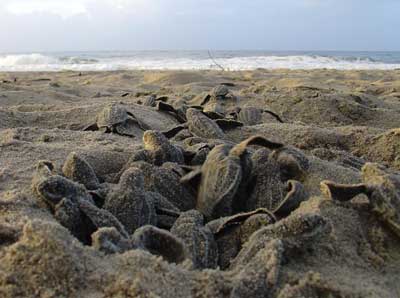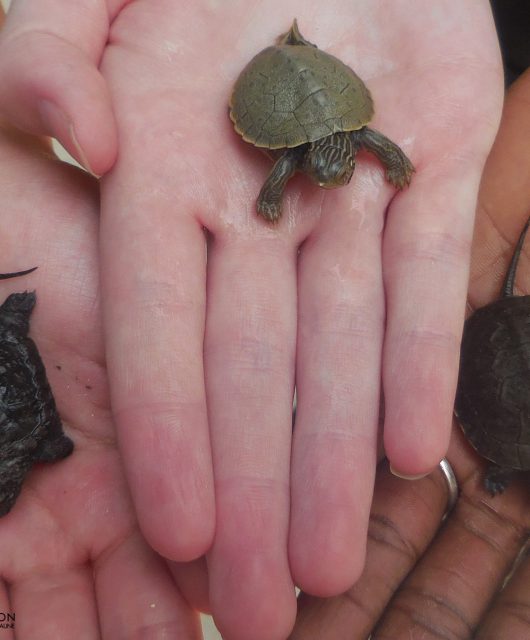Leatherback turtles are dependent on a variety of different habitats throughout their lives. Nesting beaches are where females will deposit their eggs and these eggs will mature into young leatherbacks. These nesting sites are crucial for population survival. Unfortunately due to natural and human related activities, these habitats are at risk of being degraded or worse, lost.

These beaches are usually located in countries around the Tropic of Cancer in areas such as the Caribbean, South America and Africa. A common problem on nesting beaches throughout the world is the disturbance or destruction of these habitats from sea level rise, coastal development, vehicle traffic, and other human related activities.
Leatherback turtles are unique in that they will return to nest on the same beach in which they were born. Rise in sea level, due to climate change, will reduce the availability of these beaches as well areas in which these turtles forage. A major threat to leatherback turtles on nesting beaches is artificial light cause by homes and resorts. The moon’s reflection on the ocean is thought to help females find their way back to the ocean after they have nested. Artificial lights can be disorienting and cause females to crawl in the wrong direction, making them exhausted from extended time on land and dehydrated, which can lead to death. Hatchlings also use bright ocean to orient themselves once they have emerged from their nest. Artificial lights on land can mislead hatchlings and cause them to move inland, making them more vulnerable to predators. Many coastal communities and resorts are encouraged to turn off outdoor lights during hatching period to ensure that hatchlings can find their way to the ocean.
The development of coastlines, for housing and resorts has a huge impact on leatherback turtles. Resorts often alter shorelines, including the vegetation around it which can cause for shoreline erosion and the loss of beach. Additionally, fortification structures are also add to reduce this erosion, but often create a barrier in which females leatherback turtles must overcome to access their nesting grounds. In some areas that are highly populated, mechanical raking of beaches does occur. This machinery compacts the sand and can affect the ability of hatchlings to emerge or even uncover the nest. Since the sex of turtle hatchlings is determined by the temperature of incubation (warmer temperatures result in females while cooler temperatures result in males) exposure and disturbance of nests can affect sex ratios which can have long term population effects.
Ensuring that nesting beaches remain intact and protected for sea turtles is important in order to ensure that we have hatchlings in the future. To learn more about leatherback turtles and the Great Canadian Turtle Race, please visit www.turtlerace.ca!



